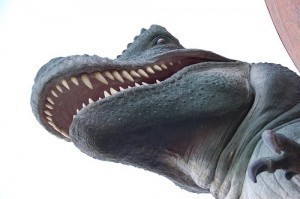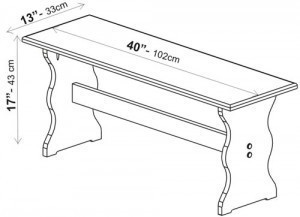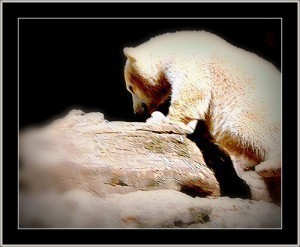How Big is a T-Rex?
The size of a T Rex or Tyrannosaurus Rex varied, but the largest were 15 ft tall and 40 ft long. A mature T Rex weighed over 16,000 lbs.
Physical Characteristics of T Rex
The head of a T Rex is bigger ratio wise compared to the body. To make up for this disparity, the muscular structure is immense. This gave it enough power to destroy bones.
The T Rex has a long tail, large back legs, and very sharp teeth. One of its most conspicuous features is its small forearms. Popular fiction depicts T Rex as standing up. Studies show that it isn’t possible for the creature to remain upright for extended durations. T Rex has about 200 bones.
The size of a T Rex meant it could not move very fast. It has an average speed of about 10 to 15 mph. This is in contrast to the fast creatures depicted in films.
The name T Rex means “king tyrant lizard”. It was given to the creature because it was the largest carnivorous dinosaur discovered during its time.
Today, scientists know larger meat eating dinosaurs existed. Torvosaurus, Allosaurus, Epanterias and Acrocanthosaurus are all meat eaters and bigger than T Rex. Like the other meat eaters, T Rex feasted on other dinosaurs.
Location and Discovery
T Rex lived during the Cretaceous Period about 65 million years ago. Its remains were found in what is known today as North America.
Majority of the remains have been found in Montana, Dakota and other states across the US. The earliest T Rex finds were recovered in the early 1890s in Colorado. Specifically, they were found in South Dakota and Wyoming.
Over 24 almost fully complete T Rex remains have been uncovered. Over 20 partially complete pieces remains have also been unearthed.
Hunter or Scavenger?
Many people believe that T Rex was a fearsome predator and is depicted as such in movies. However, there are scientists who believe that T Rex was a scavenger. Those who support this theory base it on the forearms. They argue that it is too small to be used for predatory attacks.
However, there are still those who insist it was a predator. Proponents of this theory point to its jaws and teeth; they were clearly built for ripping apart meat and bones.
The size of a T Rex as described here are the largest currently known. Smaller variants exist. It is also possible that larger specimens are buried and yet to be unearthed.





